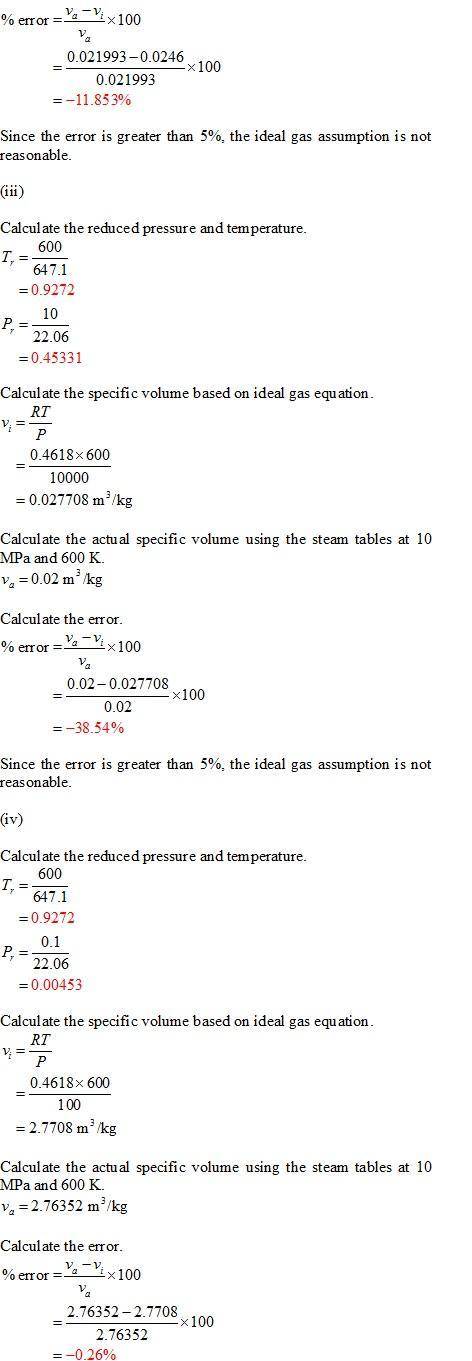
Engineering, 27.02.2020 18:42 tangia
The substance is steam (H2O). NOTE: The purpose of this problem is to illustrate that there are conditions where water vapor is far from ideal-gas behavior. For this reason, in this course, we will always use tables or NIST to determine properties of H2O for all conditions to avoid misuse of the ideal-gas EOS.
a. For the four conditions below, calculate the reduced pressure and the reduced temperature.
HINT: See Appendix E. Based on these values, decide if ideal-gas behavior is reasonable, i. e., that Pv = RiT within +/- 5%.
i. P = 15 MPa T = 1200 K
ii. P = 15 MPa T = 800 K
iii. P = 10 MPa T = 600 K
iv. P = 0.10 MPa T = 600 K
b. Use the generalized compressibility chart (Fig. 2.18 p. 92) to estimate a value of the compressibility factor Z for these conditions. How do these values compare with your thinking in part 1?
c. Use the NIST webbook to determine the compressibility factor Z for steam at the conditions above. How "ideal" is steam at these various conditions? How do these Z-values compare with your estimates from part 2?

Answers: 3


Other questions on the subject: Engineering

Engineering, 04.07.2019 18:10, meganwintergirl
Afour cylinder four-stroke in-line engine has a stroke of 160mm, connecting rod length of 150mm, a reciprocating mass of 3kg and its firing order is 1-3-4-2. the spacing between cylinders is 100mm. i. show that the engine is in balance with regard to the primary inertia forces and primary 3. a and secondary inertia couples. li determine the out of balance secondary inertia force ii. propose ways of balancing this out of balance force and discuss the challenges that will arise
Answers: 3

Engineering, 04.07.2019 18:10, xboxdude06
Slip occurs via two partial dislocations because of (a) the shorter path of the partial dislocation lines; (b) the lower energy state through partial dislocations; (c) the charge balance.
Answers: 1

Engineering, 04.07.2019 18:10, salazjlove
Which of the following refers to refers to how well the control system responds to sudden changes in the system. a)-transient regulation b)- distributed regulation c)-constant regulation d)-steady-state regulation
Answers: 1

Engineering, 04.07.2019 19:10, jimena15
10 kg of co2 is initially contained at 400 kpa and 300 k. the gas constant for carbon dioxide is 189 j/lkg k) and has a specific heat ratio, k, of 1.289. isentropic expansion then occurs until the pressure is 200 kpa. a) determine the initial volume of co2 in m. b) determine the final temperature in k. c) determine the work done by the system during the expansion kl.
Answers: 2
You know the right answer?
The substance is steam (H2O). NOTE: The purpose of this problem is to illustrate that there are cond...
Questions in other subjects:

History, 11.10.2019 16:30




Biology, 11.10.2019 16:30

Social Studies, 11.10.2019 16:30

Geography, 11.10.2019 16:30










